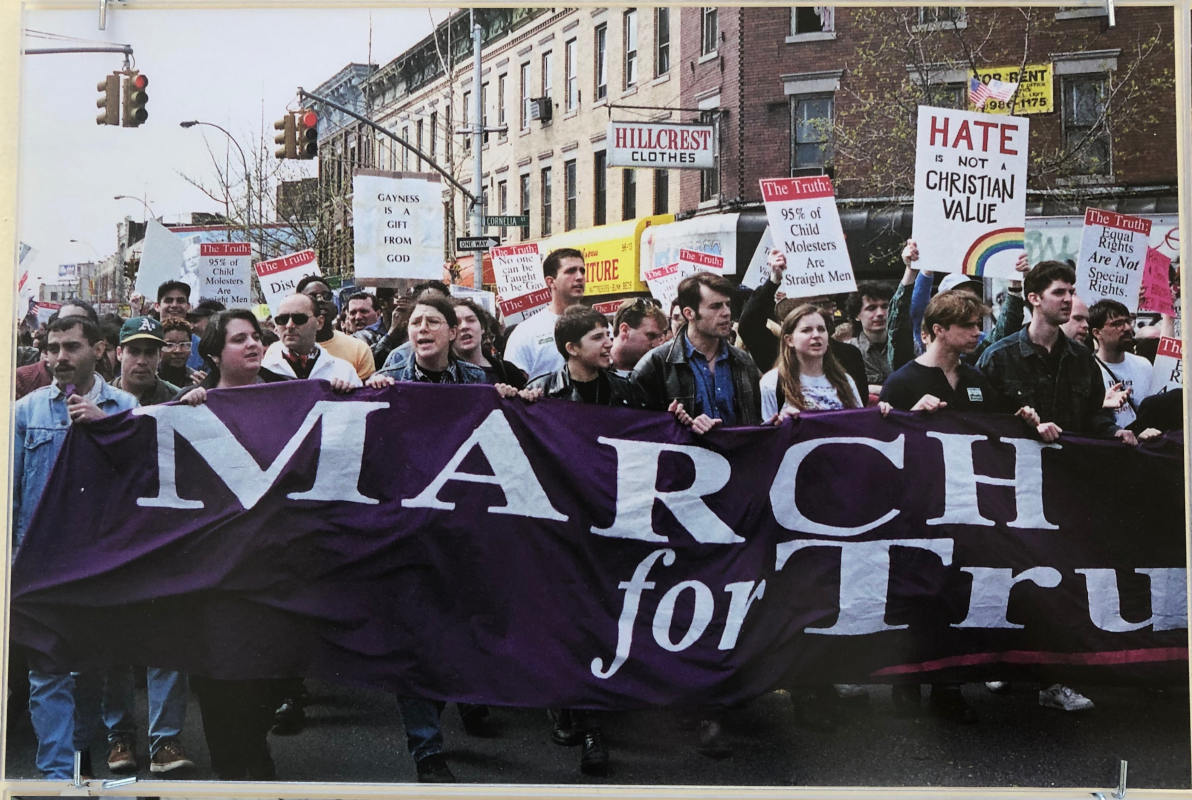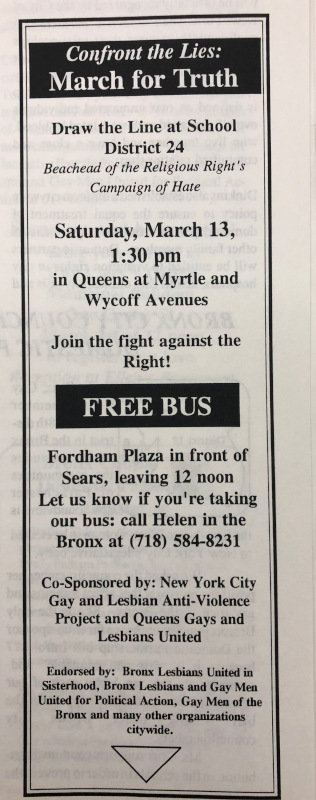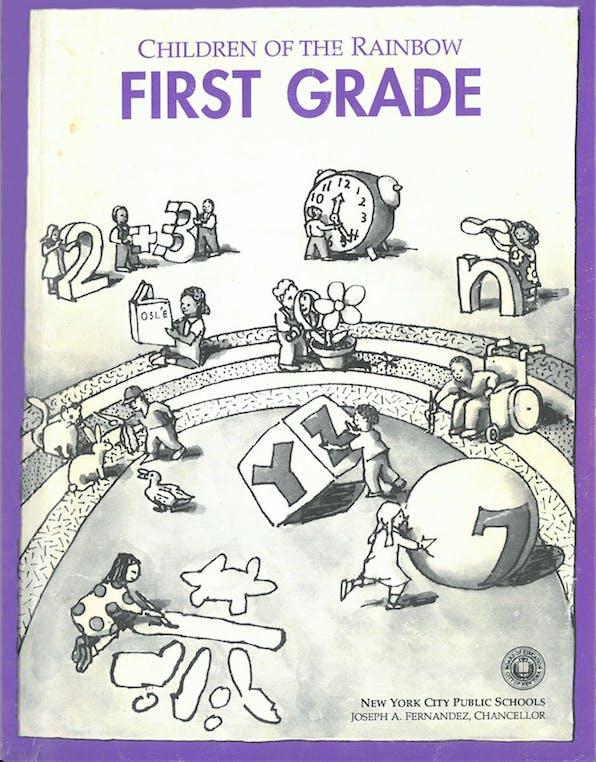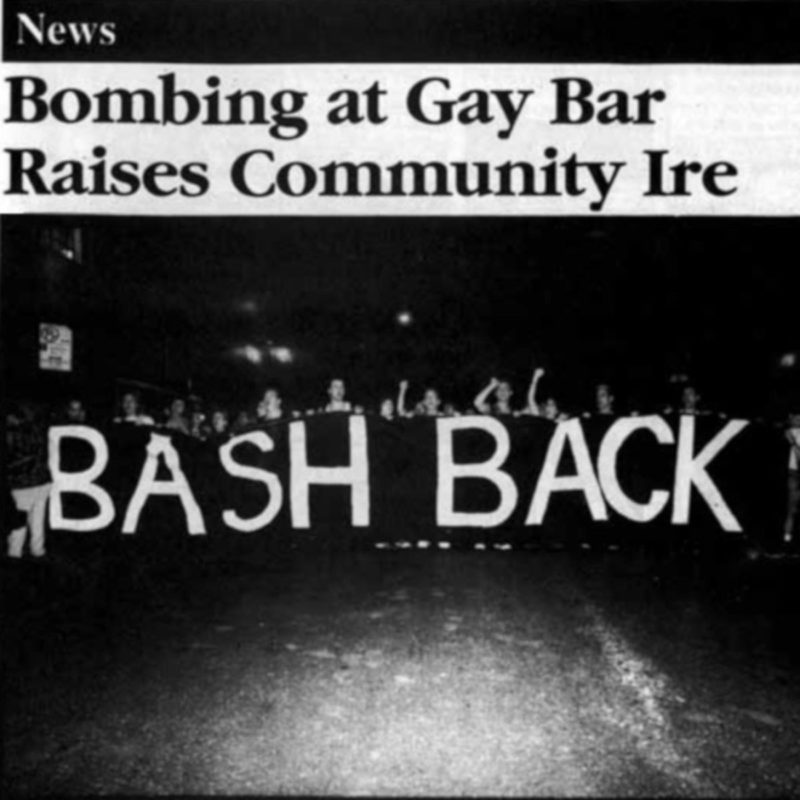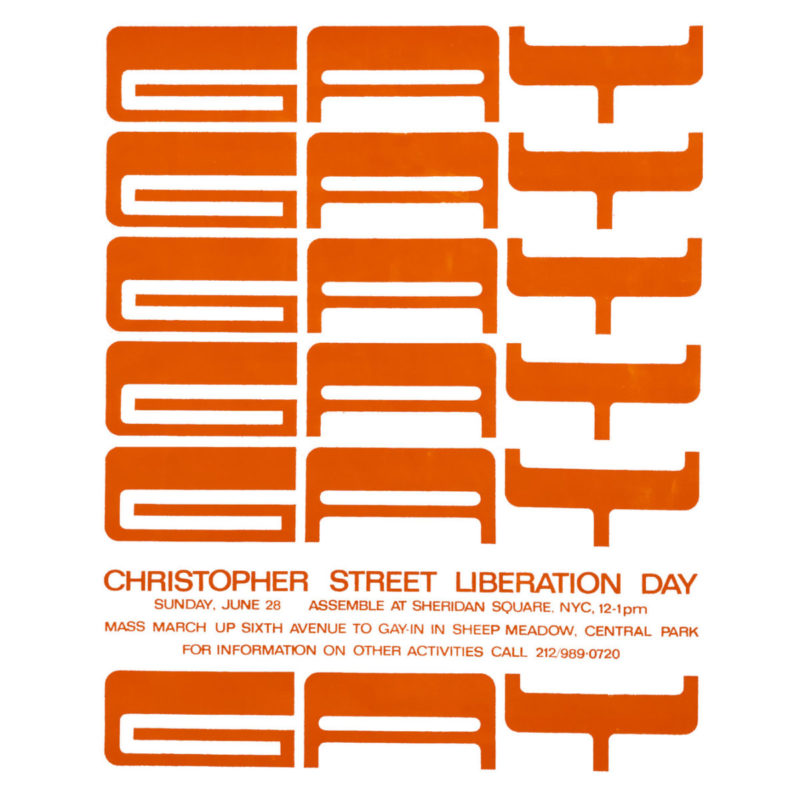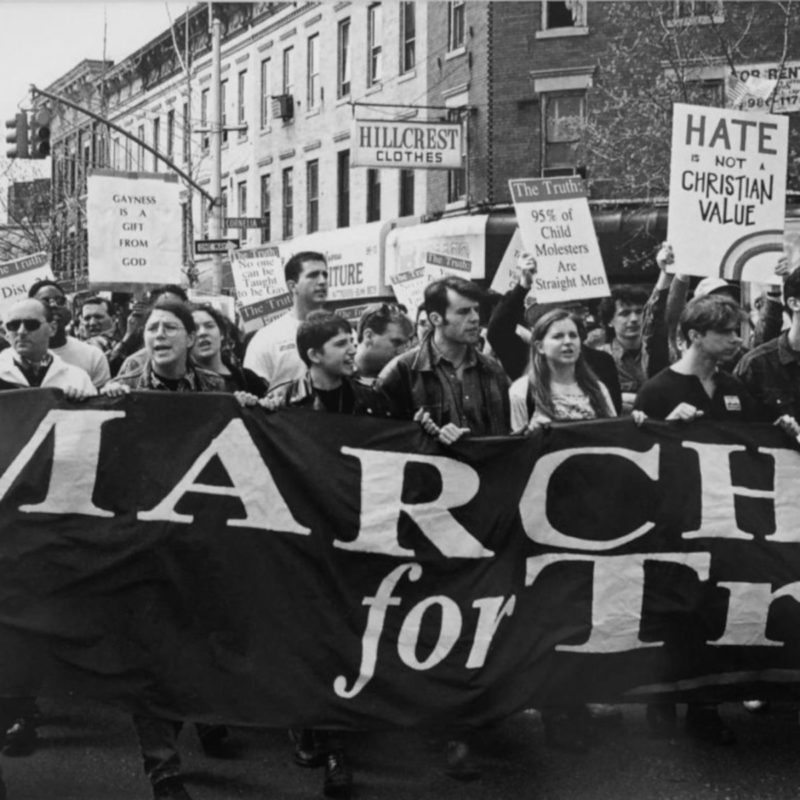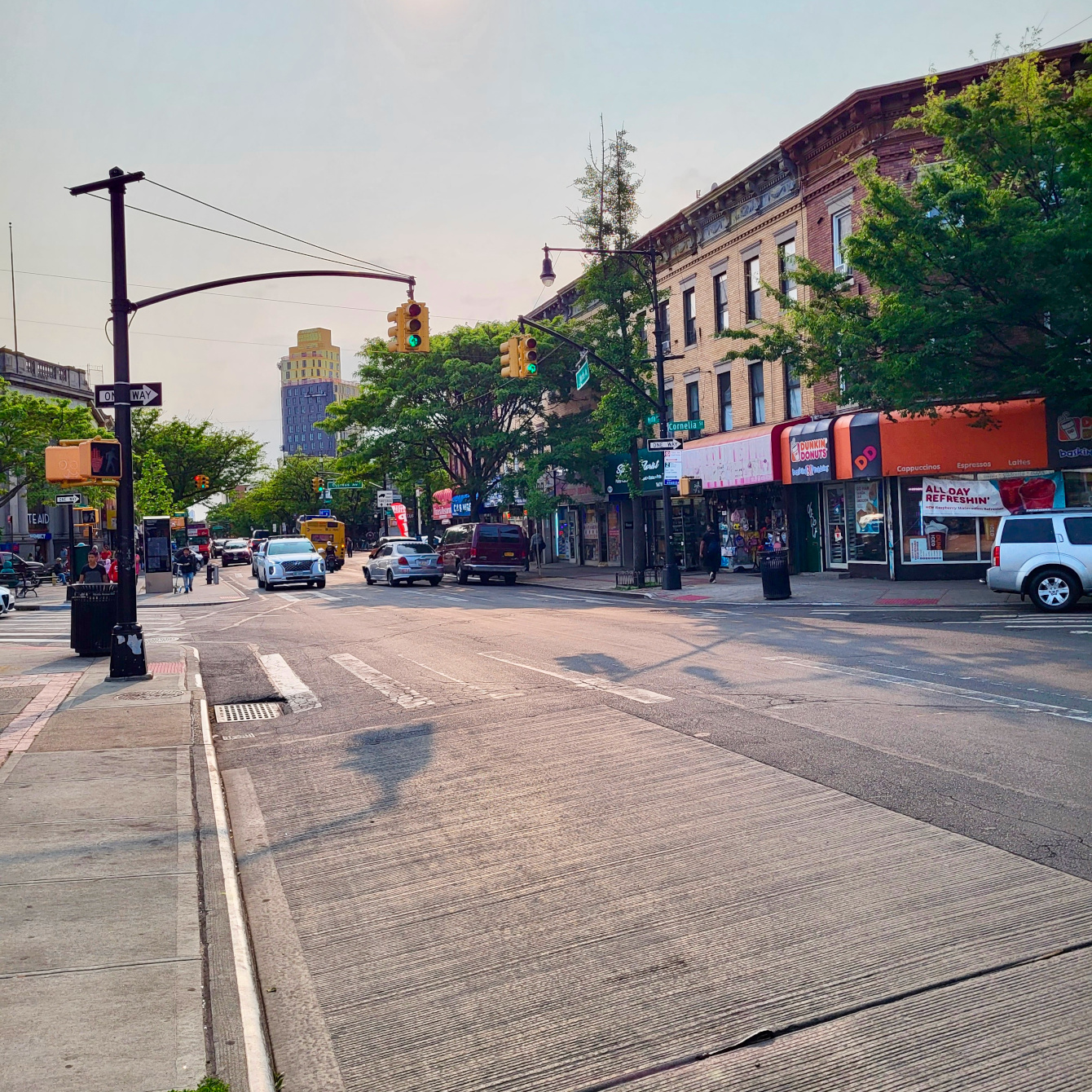
March for Truth
overview
On March 13, 1993, the March for Truth was organized by the Anti-Violence Project and Queens Gays and Lesbians United, along Myrtle Avenue in Ridgewood, Queens (District 24), to counter the homophobic response to the “Children of the Rainbow” curriculum.
Introduced in 1991 as a guide for first-grade classrooms to promote acceptance of all of the city’s racially diverse communities and family structures, the 443-page curriculum’s three pages of LGBT-related content set off a city-wide controversy that began in District 24.
History
In 1989, following the racially-motivated murder of a Black man in the predominantly white neighborhood of Bensonhurst, Brooklyn, a group of New York City teachers and administrators began developing a curriculum that would teach first graders respect for all of the city’s diverse communities. The Board of Education introduced this “Children of the Rainbow” guide into the public school system in November 1991. A section of the 443-page document focused on varying family structures, including three pages on families headed by same-sex parents. Among a list of hundreds of recommended (but not required) reading material were three LGBT-related books: Heather Has Two Mommies, Daddy’s Roommate, and Gloria Goes to Gay Pride.
As school came back into session in the fall of 1992, Mary Cummins, school board president of District 24, which included the neighborhoods of Maspeth and Ridgewood, Queens, began publicly attacking the Children of the Rainbow curriculum for its LGBT content. Cummins was already well known for her stance against bilingual education, multicultural education, sex education (teachers were forbidden from using words such as “homosexuality” and “contraception”), and other social issues. With Children of the Rainbow, Cummins tapped into people’s homophobia by amplifying the curriculum’s gay content and spreading lies about what would be taught, a strategy that soon extended to other parts of the city. In District 1 on Manhattan’s Lower East Side, for example, people began handing out male porn magazines as an illustration of what first graders were being taught. Ron Madson, of the Lesbian and Gay Teachers Association, recalled Board of Education meetings where members of the public accused gay teachers of being child molesters.
To counter this homophobic hysteria, the New York City Gay and Lesbian Anti-Violence Project (now the New York City Anti-Violence Project; AVP) and Queens Gays and Lesbians United (Q-GLU) organized the March for Truth on Saturday, March 13, 1993, starting at Myrtle and Wyckoff Avenues in Ridgewood (District 24), on the border of Brooklyn and Queens. According to Q-GLU co-founder Ed Sedarbaum, groups from all parts of the city rented buses in order to march along Myrtle Avenue and hand out flyers separating fact from fiction about the curriculum. While the Children of the Rainbow curriculum did not move forward, the controversy surrounding it is considered one of two watershed moments (the other being the gay-biased murder of Julio Rivera) that led to the increased visibility of LGBT activism in Queens.
In the spring of 2019, the NYC LGBT Historic Sites Project received funding through the Department of Education to teach LGBT-inclusive history in public schools in the city’s five boroughs. The initiative was supported by the City Council and championed by Councilmember Daniel Dromm, who, at the time of the Children of the Rainbow controversy, was a schoolteacher in District 24. The event had inspired him to come out of the closet, become politically active, and co-found the Queens Pride Parade in 1993.
Entry by Amanda Davis, project manager (October 2019), and made possible by the New York State Council on the Arts with the support of Governor Andrew M. Cuomo and the New York State Legislature.
NOTE: Names above in bold indicate LGBT people.
Sources
The Daniel Dromm Papers, The LGBTQ Collection, LaGuardia and Wagner Archives, LaGuardia Community College.
Lally Weymouth, “Mrs. Cummins’s Triumph,” The Washington Post, January 8, 1993.
Richard Shpuntoff, Julio of Jackson Heights, documentary, 2016.
Steven Lee Myers, “Ideas & Trends: How a ‘Rainbow Curriculum’ Turned into Fighting Words,” The New York Times, December 13, 1992, sec. 4, p. 6.
Do you have more information about this site?
This project is enriched by your participation! Do you have your own images of this site? Or a story to share? Would you like to suggest a different historic site?
